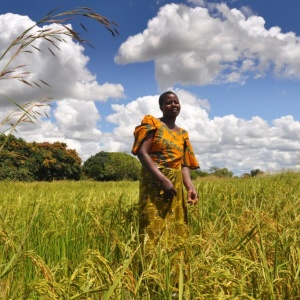
This paper summarises the evidence on the role that agriculture plays in improving nutrition, how food systems are changing rapidly due to globalization, trade liberalization, and urbanization, and the implications for nutrition globally.
The authors mainly review the evidence on linkages between agriculture and undernutrition, analysing the agriculture–nutrition disconnect and highlighting policy and programmatic options for addressing this global challenge. The paper especially draws on research and discourse from the last five years in the public health and nutrition literature.
Based on the evidence reviewed, the authors conclude with a set of recommended actions to enhance the nutrition-sensitivity of agriculture and food systems, and highlight three areas of particular importance:
Knowledge, evidence, and communications
o Identify and embed appropriate nutrition-relevant indicators and metrics, including (a) indicators of inputs, processes, and outcomes of agri-food systems, and (b) collection of nationally representative integrated data across agriculture, food systems, nutrition, and health that reveal interactions and linkages.
o Use such data to progressively apply a nutrition lens to food systems and value chains, where “value” is no longer simply monetary. Such a nutrition lens would need to be bifocal—on the one hand reviewing likely implications and impacts on undernutrition (including micronutrient deficiencies) for vulnerable groups, and on the other, reviewing likely impacts on overweight and obesity.
o Evaluate programs, document “stories of change” and show what's possible (including “low hanging fruits,” and high-impact, rapid-return actions) to build demand. Highlight the “win–win” synergies (e.g., linking small-scale local production with school feeding initiatives).
o Generate evidence on how to scale up and sustain nutrition-sensitive actions.
o Raise awareness (using relevant media and communications channels) and generate demand for diets and food systems that are sustainable and healthy. Agriculture should be perceived to be not solely about food and feeding, but also about nutrition and nourishing.
o Support/fund rigorous monitoring of nutrition effects (pathways and outcomes) of agricultural investments, and more and better operational research and impact evaluations.
o Carry out more focused research to reveal trade-offs and potential synergies of nutrition-sensitive agriculture.
o Strengthen feedback and evidence-to-action loops so that lessons are learned and applied progressively.
o Link improved monitoring data with transparent systems of accountability and thus ultimately with action/change (via policies and clear roles and responsibilities of actors).
Politics, governance, and policy
A very long list of policy options are discussed for the following areas: agricultural production, market and trade systems, food transformation and consumer demand, and consumer purchasing power.
Capacity, leadership, and financing
o Develop capacity for integration of disciplines (agriculture, health, nutrition) at different administrative levels (e.g., through cross-disciplinary training, provision of tools to help communicate and work across sectors, disciplinary integration of course curricula).
o Develop mid-level (district-level) operational and strategy capacities. Training and education needs to be strengthened with regard to agriculture's linkages to nutrition.
o Cultivate leadership (transformational capacity). Nutrition champions, policy entrepreneurs, and civil society activists at all levels need to be supported and encouraged. Cross-sectoral “lateral” leadership is needed to bridge sectoral divides (e.g., between agriculture and health).
o Clarify financing—budgetary reallocations and/or increased funding—for nutrition-sensitive agri-food systems (as part of a wider national costing exercise on nutrition).
Abstract
Malnutrition is a global challenge with huge social and economic costs; nearly every country faces a public health challenge, whether from undernutrition, overweight/obesity, and/or micronutrient deficiencies. Malnutrition is a multisectoral, multi-level problem that results from the complex interplay between household and individual decision-making, agri-food, health, and environmental systems that determine access to services and resources, and related policy processes. This paper reviews the theory and recent qualitative evidence (particularly from 2010 to 2016) in the public health and nutrition literature, on the role that agriculture plays in improving nutrition, how food systems are changing rapidly due to globalization, trade liberalization, and urbanization, and the implications this has for nutrition globally. The paper ends by summarizing recommendations that emerge from this research related to (i) knowledge, evidence, and communications, (ii) politics, governance, and policy, and (iii) capacity, leadership, and financing.
Reference
S. Gillespie, M. van den Bold, Global Challenges 2017, DOI: 10.1002/gch2.201600002.
Read the full article here.







Post a new comment »